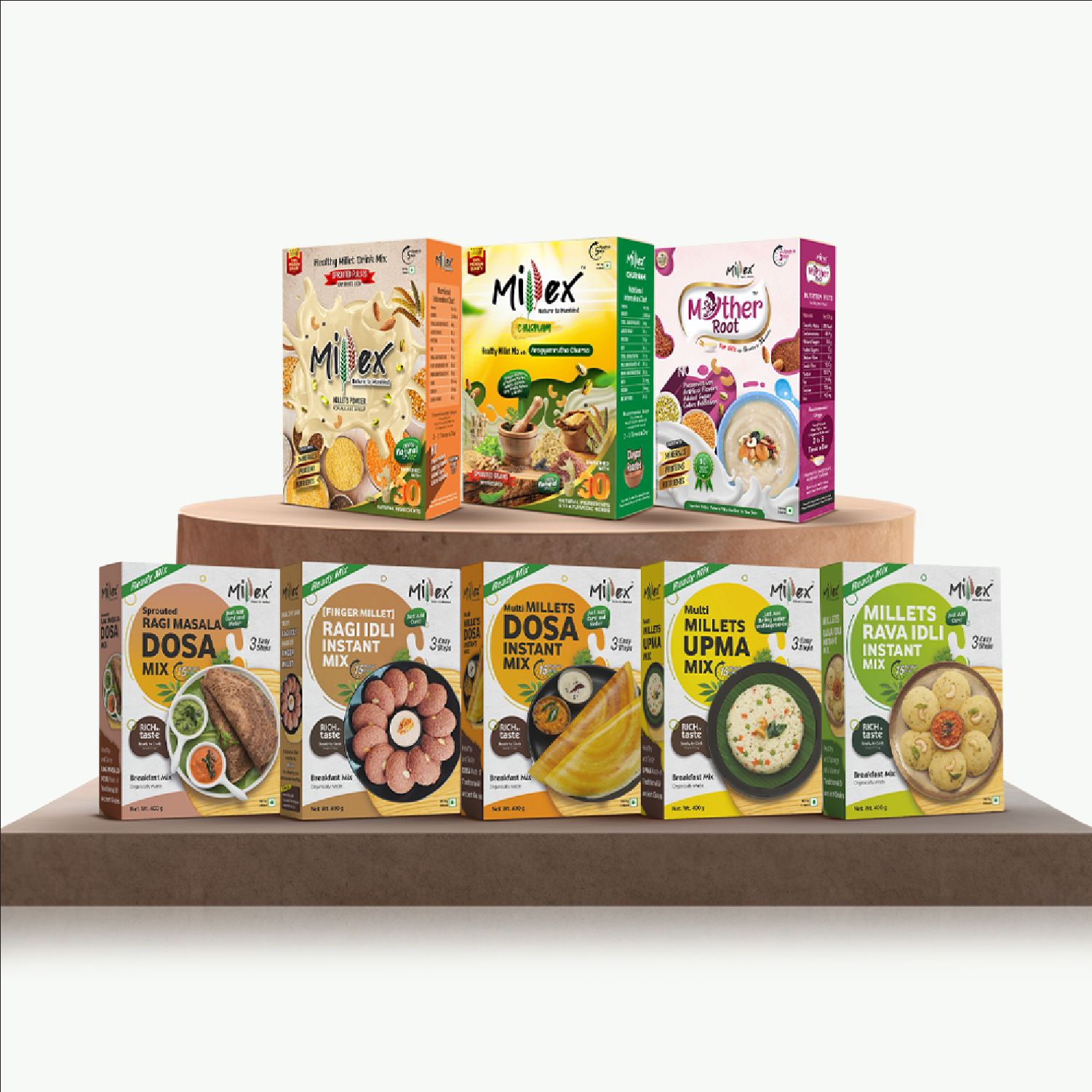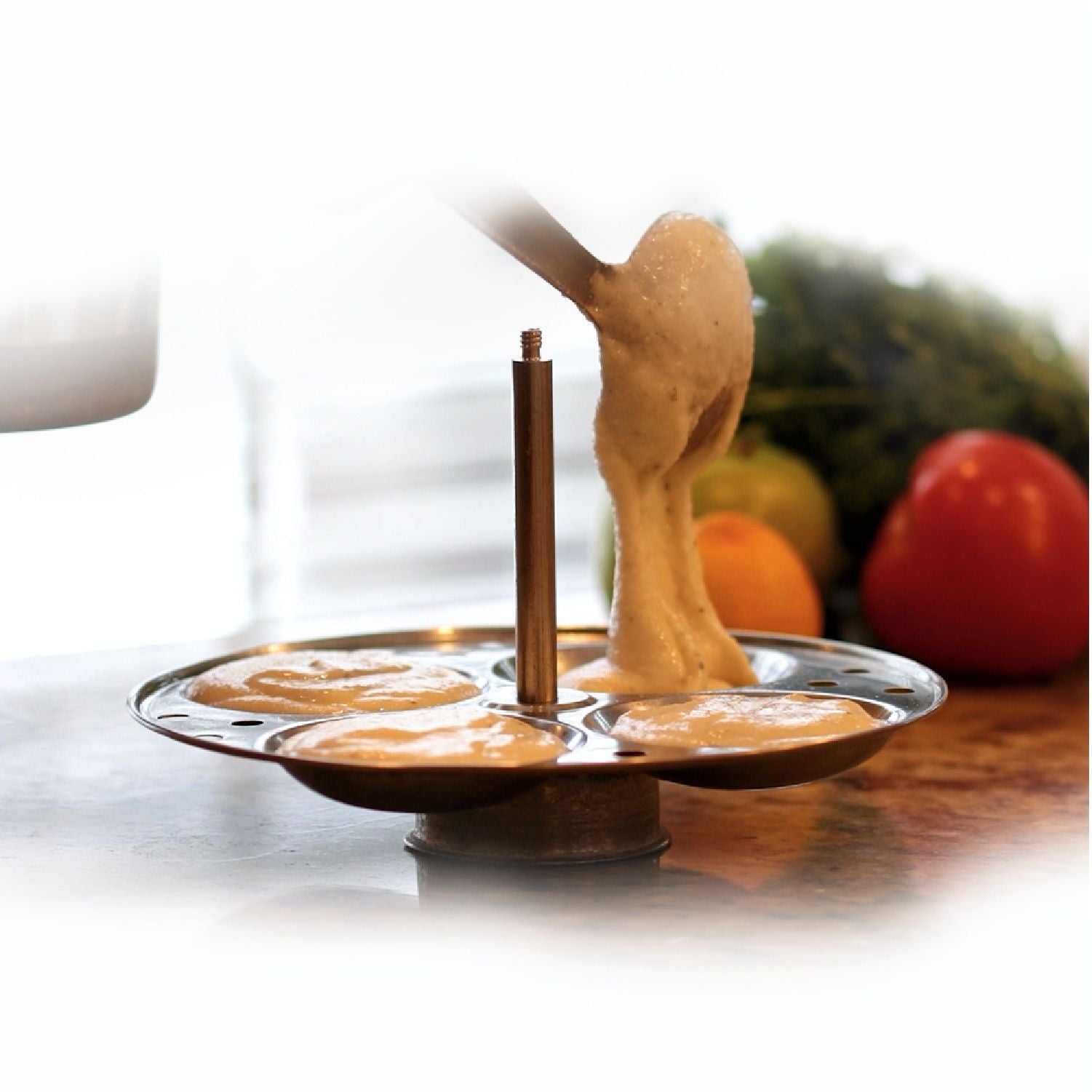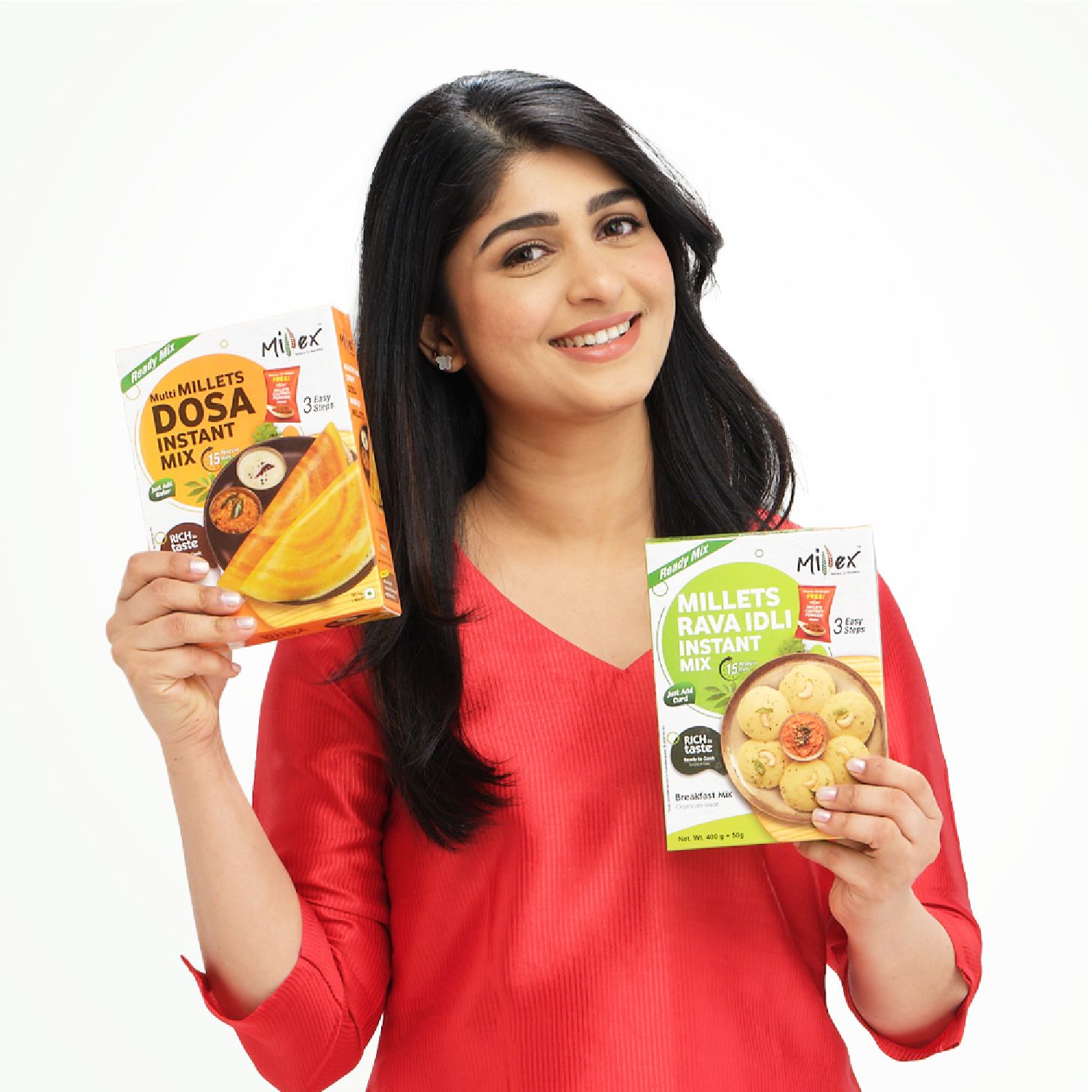Managing diabetes is often stressful. Do you know which is more frustrating? Controlling your cravings. Isn't it? As we eat flavorless foods for so long, our taste buds will automatically start to crave while seeing sweets.
Besides all these, if we look at our diet routine, it is often filled with rice and wheat. This might be a major reason for people getting diabetes. Our traditional Indian cuisine is often filled with varieties of millet, grains, and pulses. Nowadays, these millets are getting the spotlight.
Millex is a top-brand health mix provider that aims to fulfill the nutritional needs of children and adults. Made up of 30+ natural ingredients, including various cereals, pulses, millets, and nuts, Millex health mixes are a perfect choice for today's bustling lifecycle. Their commitment to quality ensures that all their products are 100% natural with 0 added artificial colors and additives.
Millets for Diabetes Management
Millets are beneficial for diabetes management, making them an excellent whole-grain choice for controlling blood sugar levels. Their high fiber content slows digestion, resulting in a gradual release of sugar into the bloodstream and reducing the risk of spikes in blood sugar.
Millets for diabetes have a lower glycemic index (GI) compared to many other grains, causing a slow, steady rise in blood sugar. High-fiber, low-GI foods help maintain stable blood sugar levels, lower cholesterol, and support weight loss. All of the abovementioned factors are crucial for diabetes management.
SCFAs play a vital role in managing blood sugar levels. It improves glucose absorption in muscle and adipose tissue. Additionally, SCFAs stimulate the secretion of glucagon-like peptide-1 (GLP-1).
Peptide-1 is an enzyme that increases insulin secretion and further helps to regulate blood sugar levels effectively. It is important to note that the GI value of millet varies by type. So, selective millet may be more suitable for people with diabetes than others.
What Happens After a Meal for Diabetes Patients?
For diabetes patients, blood sugar levels can spike rapidly beyond the normal range right after a meal. Soon after, due to the body's inability to store the excess glucose for future use, blood sugar levels can drop below normal.
This fluctuation in sugar levels can lead to various health issues, including dizziness, extreme hunger, fatigue, trembling hands, and frequent urination. These rapid changes in blood glucose can cause significant discomfort.
If not managed properly, it can contribute to long-term complications such as cardiovascular disease, nerve damage, and vision problems. Therefore, consistent monitoring and dietary management are crucial for diabetes patients.
How Millets Help Control Blood Sugar Levels in Diabetes Patients?
Millets are highly beneficial for diabetes patients due to their unique nutritional profile. They are rich in fiber, slowly digestible starch, and resistant starch, all of which contribute to a gradual release of glucose into the bloodstream. Millets unique composition makes them a favorable option for controlling blood sugar levels.
High Fiber Content
Millets are rich in dietary fiber, which is crucial for managing diabetes. Fiber slows down the digestion process, leading to a gradual release of glucose into the bloodstream. This slow absorption helps prevent sudden spikes in blood sugar levels.
It maintains steadier glucose levels throughout the day. High-fiber diets are also associated with improved digestive health and a lower risk of cardiovascular diseases, which are common complications of diabetes.
Low Glycemic Index
The glycemic index of a food measures how quickly it raises blood sugar levels. Millets generally have a lower GI compared to other grains like rice and wheat. This means that consuming millet results in a slower, more controlled increase in blood sugar levels.
Kodo millet, foxtail millet, and barnyard millet are particularly noted for their low GI, making them suitable for diabetic diets. Incorporating these millets into meals can help manage post-meal blood sugar spikes effectively.
Rich in Resistant Starch
Millets are an excellent source of resistant starch. It is not digested in the small intestine but ferments in the colon. This fermentation process produces short-chain fatty acids (SCFAs) that improve insulin sensitivity and reduce blood sugar levels.
SCFAs also contribute to gut health. It is increasingly recognized as important in managing diabetes and overall metabolic health.
Essential Nutrients
Millets are packed with essential vitamins and minerals, including magnesium, phosphorus, iron, and B vitamins. Magnesium is particularly beneficial for diabetes management as it plays a role in insulin secretion and glucose metabolism.
A diet rich in these nutrients supports overall health and can aid in managing the complications associated with diabetes.
Protein-Rich
Millets contain a good amount of plant-based protein. It is essential for maintaining muscle mass and overall health. Protein also helps in stabilizing blood sugar levels by slowing down the absorption of carbohydrates. Including millet as a part of a balanced meal can provide the necessary protein intake for individuals with diabetes.
Antioxidant Properties
Millets are rich in antioxidants such as phenolic acids, tannins, and phytates. These compounds help neutralize free radicals, resulting in reduced oxidative stress and inflammation. These are linked to diabetes and its complications.
Regular consumption of antioxidant-rich foods like millet can support better metabolic health and enhance the body's defense mechanisms.
By integrating millets into a balanced diet, individuals with diabetes can benefit from their fiber, low GI, resistant starch, essential nutrients, protein, and antioxidants, aiding in effective blood sugar management and overall health improvement.
Let's Look at What Studies Show
Several studies indicate that millets have a lower glycemic index (GI) compared to white rice. This means they cause a slower, more gradual increase in blood sugar levels.
Research has shown that long-term consumption of millet can significantly reduce both fasting and post-meal blood glucose levels in people with diabetes. Millets are part of well-balanced meals that include proteins and vegetables.
Moreover, a significant reduction in HbA1c levels. It is a marker of long-term blood sugar control. It has been observed in individuals with prediabetes who regularly consume millet.
Minimally processed millets have been found to be more effective in lowering a meal's GI compared to white rice and refined wheat. It makes them a beneficial addition to the diet for managing blood sugar levels.
So, which millet should I go with?
Barnyard Millet:
Known for its low glycemic index and versatility in cooking, barnyard millet offers diabetic individuals a nutritious alternative to high-GI grains. Its ability to be used in various dishes makes it a convenient addition to a diabetic-friendly diet.
Foxtail Millet:
With its low GI and traditional use in Indian cuisine, foxtail millet is highly recommended for diabetes management. It can be cooked similarly to rice or utilized in porridge, upma, and gluten-free baking, offering flexibility in meal planning.
Finger Millet (Ragi):
Renowned for its exceptional nutritional profile, including low GI and high fiber content, Finger millet is a staple in diabetes-friendly diets. Its versatility in dishes like rotis, instant millet dosa, and pancakes makes it a popular choice for those seeking blood sugar control.
Here is what you have to note on
It is essential to consult a nutritionist to understand how each type affects your blood sugar levels. Here are some tips for consuming millet if you have prediabetes or diabetes:
- Determine how each type of millet affects your blood sugar levels.
- Opt for whole millets over processed ones, as whole grains help control blood sugar better.
- To avoid spikes in blood sugar levels, monitor your millet consumption. Millet mix powder might be a good choice for remembering the quantity.
- Balance your meal with non-starchy vegetables and other low-caloric nutrients.
- To reduce millet portions, replace some millet with pulses, non-starchy vegetables, or curd—foods with a low GI. This is where Millet health mixes came into play.
By following these guidelines, you can enjoy the benefits of millet while managing your blood sugar levels effectively.
Millex health mixes- Your delightful companion for a healthy diabetes diet
Why following a diabetes diet should be boring? Let's make it delightful with Millex Millet Health Mix with out Churnam. It is a traditional blend of 30 natural ingredients, including millet, cereals, pulses, dry fruits, nuts, seeds, and spices.
Further enhanced with 18 essential Ayurvedic herbs such as Ashwagandha, Shatavari, and Gokshura, this health mix is highly nutritious and beneficial for overall wellness. The inclusion of 'Arogyamrutha Churna' boosts immunity to fight against viral infections.
Rich in fiber, minerals, vitamins, proteins, and antioxidants, Millex provides a balanced mix of nutrients for sustained energy, improved digestion, and enhanced immunity. Completely natural and free from artificial flavors, additives, and colors, Millex is the perfect health drink for a healthy diabetes diet. Shop yours now!






